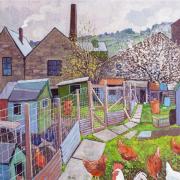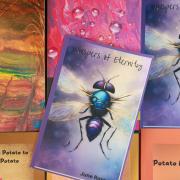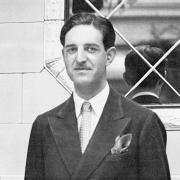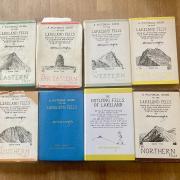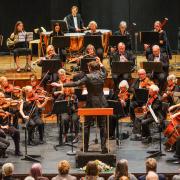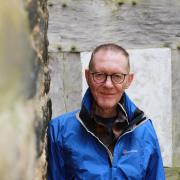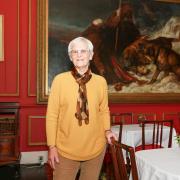Stonyhurst College houses the oldest surviving museum collection in the English speaking world. Roger Borrell reports

No matter how many times you walk up the long driveway from Hurst Green, it is hard not to be awe-struck by the soaring towers of Stonyhurst College. But behind those imposing stone walls is something equally impressive – one of the most remarkable museum collections in the world.
This priceless mix of religious relics, works of art and esoteric artefacts gathered from around the globe would have any self-respecting historian beating a path to the Ribble Valley. Begun in 1609, it is generally accepted to be the oldest surviving museum collection in the English speaking world.
It includes some 60,000 items and up to 70,000 books, many of them ancient and valuable kept in three libraries that would send bibliophiles into raptures.
The frustration for curator Jan Graffius and her team is that few of these fascinating objects are ever seen by the public. Their location inside a school means the summer vacation, when the boarders have gone home, is the only time the public can be admitted.

That will change this year thanks to the work of a charitable trust allowing easier access to people wanting to study this cultural and religious treasure trove.
The ambitious Christian Heritage Centre Trust – dedicated to ensuring Britain never forgets its Christian story – has created what is, at its most basic level, a brilliant new tourist attraction. However, it is much more than that.
The story starts just over five years ago when a group of like-minded people established the Trust to work with – but operate separately from – the school to raise the millions needed to achieve their goals.
Former Liberal MP and Ribble Valley resident Lord Alton became chairman and the project attracted a roster of notable patrons including members of the Royal family, Lord and Lady Nicholas Windsor, the ex-head of the Armed Forces, Field Marshall Lord Guthrie, and Eire’s former Taoiseach, John Bruton.

The project had three inter-connected strands. The first was to raise money to restore Stonyhurst’s historic wood-panelled libraries which house many precious volumes, including a Shakespeare first folio. These repositories were victims of the school’s ancient fabric which started to weaken under the centuries-long onslaught of Lancashire rain.
While the books were undamaged, every volume had to be removed by Jan and the team while specialist repairs were carried out to the leaking stone mullions. It was a massive task and required an elaborate system to ensure they all went back in the right place. She likens it to a 3D sudoku puzzle.
It also threw up a few interesting discoveries – not least, some cheeky notes left behind the books by past students. More importantly, they found a library of books that had belonged to a local Catholic family between 1650 and 1750. The volumes had been scattered across different sections and never brought together before. As one, they provide scholars with an insight into what people belonging to an outlawed faith were reading at the time.
The second part of the project was to re-open a former common room that had been blocked off for several years and create a new museum to showcase parts of the college’s remarkable collection. These items were gathered up by Jesuit missionaries and former pupils during their travels across the world.
Technologically advance display cases will house a programme of changing exhibitions that will enthral visitors. During the recent official opening by the Bishop of Salford, guests could marvel at a wide range of objects, including a preserved eyeball in a silver relic case. It belonged to an undercover Jesuit missionary who was captured in Worcester in the aftermath of the Gunpowder Plot in 1606 and hanged, drawn and quartered.
Less gruesome are a set of beautifully embroidered medieval vestments, one a cope made for Henry VII and worn at Westminster Abbey and a crucifix that had belonged to Sir Thomas More. There is also a Gillows altar made in the 1770s which had been painted white and left in an underground carpark. Now restored by the Stonyhurst team, it is a thing of beauty.
In another corner you can find native tribal items such as a very skimpy bridal outfit and there is a stark example of man’s impact on the planet in the form of a bottle of rainwater collected at the school’s observatory in the 1800s. It seems unremarkable until you shake it and the liquid suddenly turns black from all the soot that polluted the atmosphere at the time.
There is also a large collection of 400 native herbs gathered by north country botanist James Ward during the 19th century and these are causing interest among modern day scientists.
The final piece in the Christian Heritage jigsaw is the creation of Theodore House, a £4 million development providing accommodation for school groups, students, interest groups and others to come on guided retreats at Stonyhurst. It will also provide somewhere to stay for those who are conducting academic scholarship in the libraries and collections.
Created from the semi-derelict ruins of a roofless Grade II Victorian mill beside the school, Theodore House will have more than 30 rooms, some for families, a lecture theatre, two seminar rooms, a chapel, library and atrium.
Two local companies, architects Cassidy+Ashton and builders Warden Construction, worked on the project, due for completion this summer. The trustees need another £200,000 to include all the facilities in the original plan.
‘The corn mill once fed the bodily needs of hundreds of students,’ said Lord Alton. ‘For the future, the trustees hope it will feed the minds of the people who visit here.’
Stonyhurst is, of course, an historic independent school steeped in Jesuit tradition and the building will be a centre for retreat and research. But it will also be open to people of all faiths or none.
‘There is an extraordinary depth in the treasures at Stonyhurst and they will draw people to this region where they can also get to know our fabulous region, its hotels and restaurants,’ said Lord Alton.
‘Theodore House will facilitate programmes for people of all ages and cultures, promoting dialogue, tolerance and mutual respect at a time when the world is witnessing a tragic resurgence of religious conflict.’
However, the trustees need to ensure this not-for-profit venture pays for itself so you can also use the facilities just for a holiday in this beautiful part of the north and, perhaps, enjoy special walks dedicated to two people with close links to Stonyhurst – the Victorian poet Gerard Manley Hopkins and Lord of the Rings novelist JRR Tolkien.
Fellow trustee John Cowdall, the former chief executive of West Lancashire Council, hopes it will also attract American visitors who may have historic links with the area because of their Irish ancestry.
Charles Carroll, one of the signatories of the American Declaration of Independence was educated at St Omer, the French base for the college until Catholics were given a degree of freedom in England. No surprise then that a substantial slice of the £4 million needed for the project has come from US benefactors.
The major portion, amounting to £2 million came from the Theodore Trust, a religious and educational charity that was being wound up. The Lord Lieutenant of Lancashire Lord Shuttleworth has been a staunch supporter of the project.
‘Stonyhurst is the home of the most significant religious items in Lancashire,’ he said. ‘The development of the Christian Heritage Centre there will create a new and worthy setting for them, and will attract interest from across the world. I am proud to be a patron as it means so much for Lancashire and the Christian faith.’
It is apt that St Theodore of Tarsus was a Syrian refugee who fled persecution and was eventually made Archbishop of Canterbury, serving until 690AD. He is remembered for healing divisions and that is an important aspect for Lord Alton and his fellow trustees.
A large part of the collection involves items, some gruesome, that reflect religious persecution in this and other countries.
‘We want people to remember the mistakes of the past so we don’t make them in the future,’ said Lord Alton. ‘That is an important role for this centre’.
Stonyhurst story
The College was originally founded in St Omer in what was the Spanish Netherlands in 1593 to provide a Catholic education for English boys at a time when it was prohibited in their homeland The College was originally founded in St Omer.
It was forced to move several times, once when the Pope outlawed the Jesuits and when the French Revolution threatened. A former pupil offered the old mansion of Stonyhurst Hall in Lancashire as a temporary refuge in 1794.
By then, the treatment of Catholics in England had become far less extreme and the school remained in Lancashire. Today it is an independent school for boys and girls.
The school contains a remarkable collection of preserved animal specimens from around the world collected in the 18th and 19th century naturalist and conservationist.
Alumni include Sir Arthur Conan Doyle - his name is carved on an old desk on display in the school. Another old boy and supporter of the project is Mark Thompson, former Director General of the BBC and now at the New York Times.
Stonyhurst has many works of art including a portrait of Tsar Nicholas I of Russia and several original engravings by Rembrandt and Dürer.
The Victoria Cross was won by seven former Stonyhurst pupils.
The school also has the rope which tied Edmund Campion to the wicker hurdle which dragged him from the Tower of London to Tyburn on 1 December 1581. There is also Mary Queen of Scots’ reliquary said to contain a thorn from the crown of Jesus.
The school opens to the public during July and August. You can find more details at the school’s website.
To find out more about the Christian Heritage Centre go to www.christianheritagecentre.com






